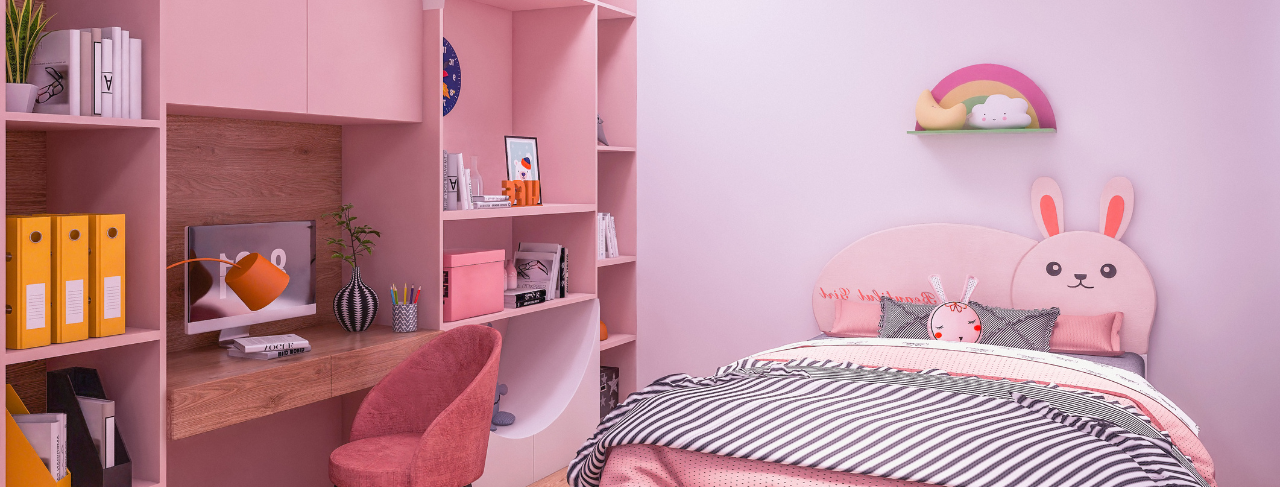
3 Tips for Painting a Child’s Bedroom
Posted on November 29, 2021
You’ve found yourself needing to paint a child’s bedroom, yet you have no idea how to start. Sound familiar? Don’t worry, you are not alone. Painting a child’s bedroom can be a challenge, especially if you want to get creative. Today, we will touch on three common approaches to painting a child’s bedroom, and a couple of tips to help do it.
What Type of Paint Do I Use?
A child’s bedroom is usually an extension of the child. For example, a small boy may want racing stripes on the walls, while a young girl may want pink walls covered with horses. Therefore, it’s a good idea to understand the goal before starting the project. Some colors are much easier to apply than others, especially if the color will be changing from dark to light. Deep reds and greens are notoriously difficult to cover, so if this is the case, you’ll want to completely seal and prime the walls first even if the new color is dark. This creates a blank canvas and may prevent multiple coats of paint being needed. Obviously, this saves time, but because sealer and primer are usually less expensive than paint, it also saves money. You may also want to apply specialty paint, such as blackboard paint to allow the child to scribble on the walls without damaging them. In this case, priming and sealing of the walls are important to make the paint stick.
Children Change Their Minds
As we know, children tend to be interested one day, and completely disinterested the next. Therefore, it may be advantageous to start with a lighter color at first. For example, a child interested in astronomy may ask for a totally black ceiling with stars that glow in the dark. However, if you plan to sell the home in the future, it’s important to know that the feature will likely need to be covered up later. This is not to say being creative with paint is a bad thing. It just may be helpful to know what you’re getting into, because it may be a lot of work to change.
Paint Light Colors First
A very common scheme in a child’s bedroom often involves applying more than one color. If you plan on a two-tone paint scheme, it is a good idea to paint the lighter one first. That way if there is over paint or drips, the darker color will often cover it. This method also reduces fine detail work between the colors, because the lighter color will be covered anyway by the darker one where the two colors meet.






